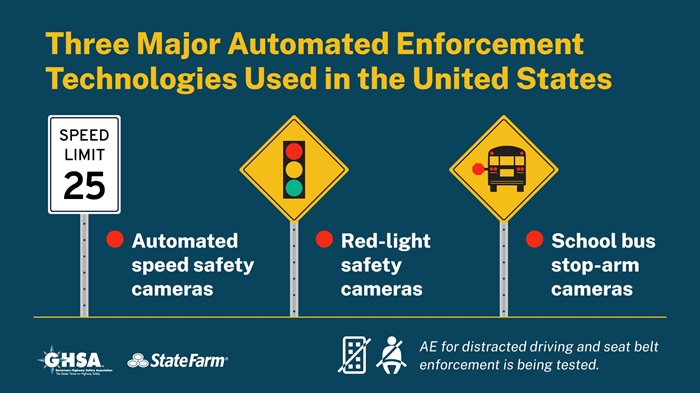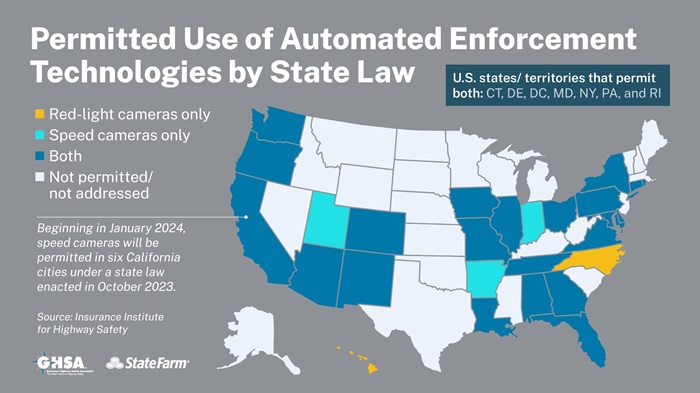
A new report from the Governors Highway Safety Association (GHSA), with the support of State Farm®, examines traffic safety cameras – an underutilized tool in the fight to reduce dangerous driving behaviors that contribute to more than 100 people dying on U.S. roads every day. The report discusses the benefits of traffic safety cameras that detect speeding, red-light running and school bus stop-arm violations, and makes recommendations to states and traffic safety partners considering implementing or expanding the use of this proven technology.
U.S. roadway deaths have increased 30% over the past decade, rising from 32,893 in 2013 to 42,795 in 2022. A plethora of studies confirm that automated enforcement (AE) programs are a proven way to change driver behavior, resulting in increased safety for everyone on the road. AE can also supplement traditional traffic enforcement while addressing potential inequities, since cameras do not see race or ethnicity. To build and sustain public trust, however, the community must be engaged in program planning and implementation and kept informed of the technology’s impact.
Recommendations for Safety Camera Programs
The report makes several recommendations for states and traffic safety partners to identify and overcome key barriers when creating or expanding an automated enforcement program, including:
- Equity: Research has repeatedly confirmed that people of color are disproportionately impacted by traffic crashes and deaths. All decisions about safety camera programs – including public engagement during the planning process, where cameras are placed and how fines are structured – must be viewed through an equity lens.
- Community participation and engagement: Members of the community where the safety cameras will be deployed must be part of the planning and implementation process. Meaningful public engagement that begins early can help bolster public acceptance and trust.
- Transparency and accessibility: Jurisdictions should share the data used to inform the decision-making process when considering whether to create an automated enforcement program. Where and when the cameras will be deployed should be highly publicized, so drivers are not caught by surprise.
- Focus on safety: Revenue generated by safety cameras should be used to support program start-up and maintenance costs, with any excess revenue dedicated to traffic safety initiatives such as infrastructure enhancements or increased education.
- Proper site selection: Cameras should be installed in locations that have crash, injury or fatality data justifying their use, particularly if these incidences involve vulnerable road users. Determining if other countermeasures, such speed calming, could be deployed to address the traffic safety problem should also be considered.
- Reciprocity agreements: Jurisdictions should create reciprocity agreements with neighboring states that address out-of-state violators who fail to pay traffic safety camera fines.
Infographics Available for Download
JPEGs of the following infographics are available for download under "Resource Downloads" below.


